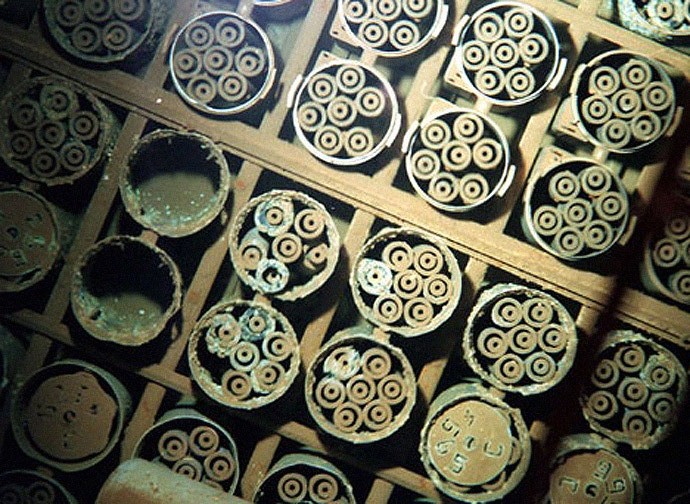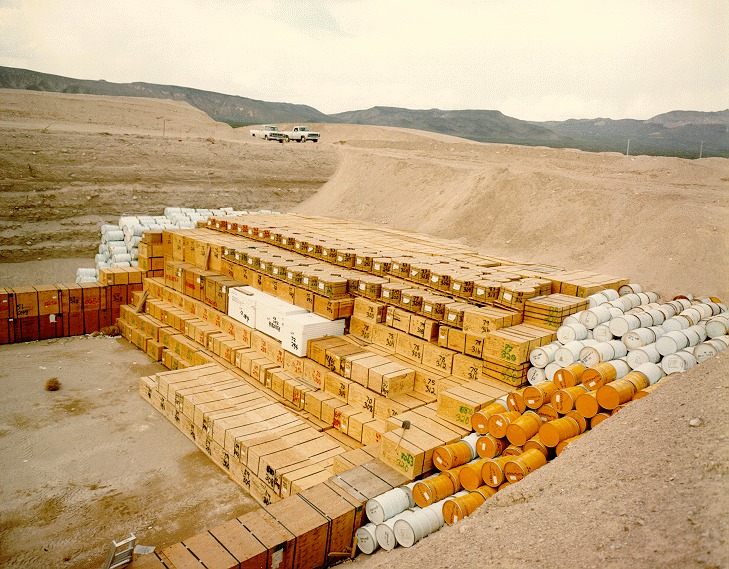|
Disposal Of Radioactive Waste
{{disambiguation ...
Radioactive waste disposal may refer to: *High-level radioactive waste management * Low-level waste disposal *Ocean disposal of radioactive waste **Ocean floor disposal *Deep borehole disposal *Deep geological repository See also * Radioactive waste#Management *Toxic waste dumping by the 'Ndrangheta The 'Ndrangheta, a criminal organization from Calabria, Italy, has been involved in radioactive waste dumping since the 1980s. Ships with toxic and radioactive waste were sunk off the Italian coast. In addition, vessels were allegedly sent to Soma ... [...More Info...] [...Related Items...] OR: [Wikipedia] [Google] [Baidu] |
High-level Radioactive Waste Management
High-level radioactive waste management concerns how radioactive materials created during production of nuclear power and nuclear weapons are dealt with. Radioactive waste contains a mixture of short-lived and long-lived nuclides, as well as non-radioactive nuclides. There was reportedly some of high-level nuclear waste stored in the United States in 2002. The most troublesome transuranic elements in spent fuel are neptunium-237 (half-life two million years) and plutonium-239 (half-life 24,000 years). Consequently, high-level radioactive waste requires sophisticated treatment and management to successfully isolate it from the biosphere. This usually necessitates treatment, followed by a long-term management strategy involving permanent storage, disposal or transformation of the waste into a non-toxic form. Radioactive decay follows the half-life rule, which means that the rate of decay is inversely proportional to the duration of decay. In other words, the radiation from a lo ... [...More Info...] [...Related Items...] OR: [Wikipedia] [Google] [Baidu] |
Low-level Waste
Low-level waste (LLW) or Low-level radioactive waste (LLRW) is nuclear waste that does not fit into the categorical definitions for intermediate-level waste (ILW), high-level waste (HLW), spent nuclear fuel (SNF), transuranic waste (TRU), or certain byproduct materials known as 11e(2) wastes, such as uranium mill tailings. In essence, it is a definition by exclusion, and LLW is that category of radioactive wastes that do not fit into the other categories. If LLW is mixed with hazardous wastes as classified by RCRA, then it has a special status as mixed low-level waste (MLLW) and must satisfy treatment, storage, and disposal regulations both as LLW and as hazardous waste. While the bulk of LLW is not highly radioactive, the definition of LLW does not include references to its activity, and some LLW may be quite radioactive, as in the case of radioactive sources used in industry and medicine. LLW includes items that have become contaminated with radioactive material or have become ... [...More Info...] [...Related Items...] OR: [Wikipedia] [Google] [Baidu] |
Ocean Disposal Of Radioactive Waste
From 1946 through 1993, thirteen countries used ocean disposal or ocean dumping as a method to dispose of nuclear/radioactive waste with an approximation of 200,000 tons sourcing mainly from the medical, research and nuclear industry. The waste materials included both liquids and solids housed in various containers, as well as reactor vessels, with and without spent or damaged nuclear fuel.IAETECDOC-1105 “Inventory of radioactive waste disposals at sea” August 1999retrieved 2011-12-4 Since 1993, ocean disposal has been banned by international treaties. ( London Convention (1972), Basel Convention, MARPOL 73/78). There has only been the disposal of low level radioactive waste (LLW) thus far in terms of ocean dumping as high level waste has been strictly prohibited. " Ocean floor disposal" (or sub-seabed disposal)—a more deliberate method of delivering radioactive waste to the ocean floor and depositing it into the seabed—was studied by the United Kingdom and Sweden, but nev ... [...More Info...] [...Related Items...] OR: [Wikipedia] [Google] [Baidu] |
Ocean Floor Disposal
Ocean floor disposal is a method of sequestering radioactive waste in ocean floor sediment where it is unlikely to be disturbed either geologically or by human activity. Several methods of depositing material in the ocean floor have been proposed, including encasing it in concrete and as the United Kingdom has previously done, dropping it in torpedoes designed to increase the depth of penetration into the ocean floor, or depositing containers in shafts drilled with techniques similar to those used in oil exploration. Ocean floor sediment is saturated with water, but since there is no water table per se and the water does not flow through it the migration of dissolved waste is limited to the rate at which it can diffuse through dense clay. This is slow enough that it could potentially take millions of years for waste to diffuse through several tens of meters of sediment so that by the time it reaches open ocean it would be highly dilute and decayed. Large regions of the ocean flo ... [...More Info...] [...Related Items...] OR: [Wikipedia] [Google] [Baidu] |
Deep Borehole Disposal
Deep borehole disposal (DBD) is the concept of disposing high-level radioactive waste from nuclear reactors in extremely deep boreholes instead of in more traditional deep geological repositories that are excavated like mines. Deep borehole disposal seeks to place the waste as much as beneath the surface of the Earth and relies primarily on the thickness of the natural geological barrier to safely isolate the waste from the biosphere for a very long period of time so that it should not pose a threat to humans and the environment. The concept was originally developed in the 1970s, but in 2014 a proposal for a first experimental borehole was proposed by a consortium headed by Sandia National Laboratories. The waste would be put into the lower mile of such a hole, within crystalline rock to isolate it from the environment.Conca, James."DOE Tries To Change The Rules On Nuclear Waste Disposal" ''Forbes'' (January 21, 2016). The upper two miles of the borehole would be filled with pr ... [...More Info...] [...Related Items...] OR: [Wikipedia] [Google] [Baidu] |
Deep Geological Repository
A deep geological repository is a way of storing hazardous or radioactive waste within a stable geologic environment (typically 200–1000 m deep). It entails a combination of waste form, waste package, engineered seals and geology that is suited to provide a high level of long-term isolation and containment without future maintenance. This will prevent any radioactive dangers. A number of mercury, cyanide and arsenic waste repositories are operating worldwide including Canada (Giant Mine) and Germany (potash mines in Herfa-Neurode and Zielitz) and a number of radioactive waste storages are under construction with the Onkalo in Finland being the most advanced. Principles and background Highly toxic waste that cannot be further recycled must be stored in isolation to avoid contamination of air, ground and underground water. Deep geological repository is a type of long-term storage that isolates waste in geological structures that are expected to be stable for millions of years, ... [...More Info...] [...Related Items...] OR: [Wikipedia] [Google] [Baidu] |
Radioactive Waste
Radioactive waste is a type of hazardous waste that contains radioactive material. Radioactive waste is a result of many activities, including nuclear medicine, nuclear research, nuclear power generation, rare-earth mining, and nuclear weapons reprocessing. The storage and disposal of radioactive waste is regulated by government agencies in order to protect human health and the environment. Radioactive waste is broadly classified into low-level waste (LLW), such as paper, rags, tools, clothing, which contain small amounts of mostly short-lived radioactivity, intermediate-level waste (ILW), which contains higher amounts of radioactivity and requires some shielding, and high-level waste (HLW), which is highly radioactive and hot due to decay heat, so requires cooling and shielding. In nuclear reprocessing plants about 96% of spent nuclear fuel is recycled back into uranium-based and mixed-oxide (MOX) fuels. The residual 4% is minor actinides and fission products the latter of w ... [...More Info...] [...Related Items...] OR: [Wikipedia] [Google] [Baidu] |




